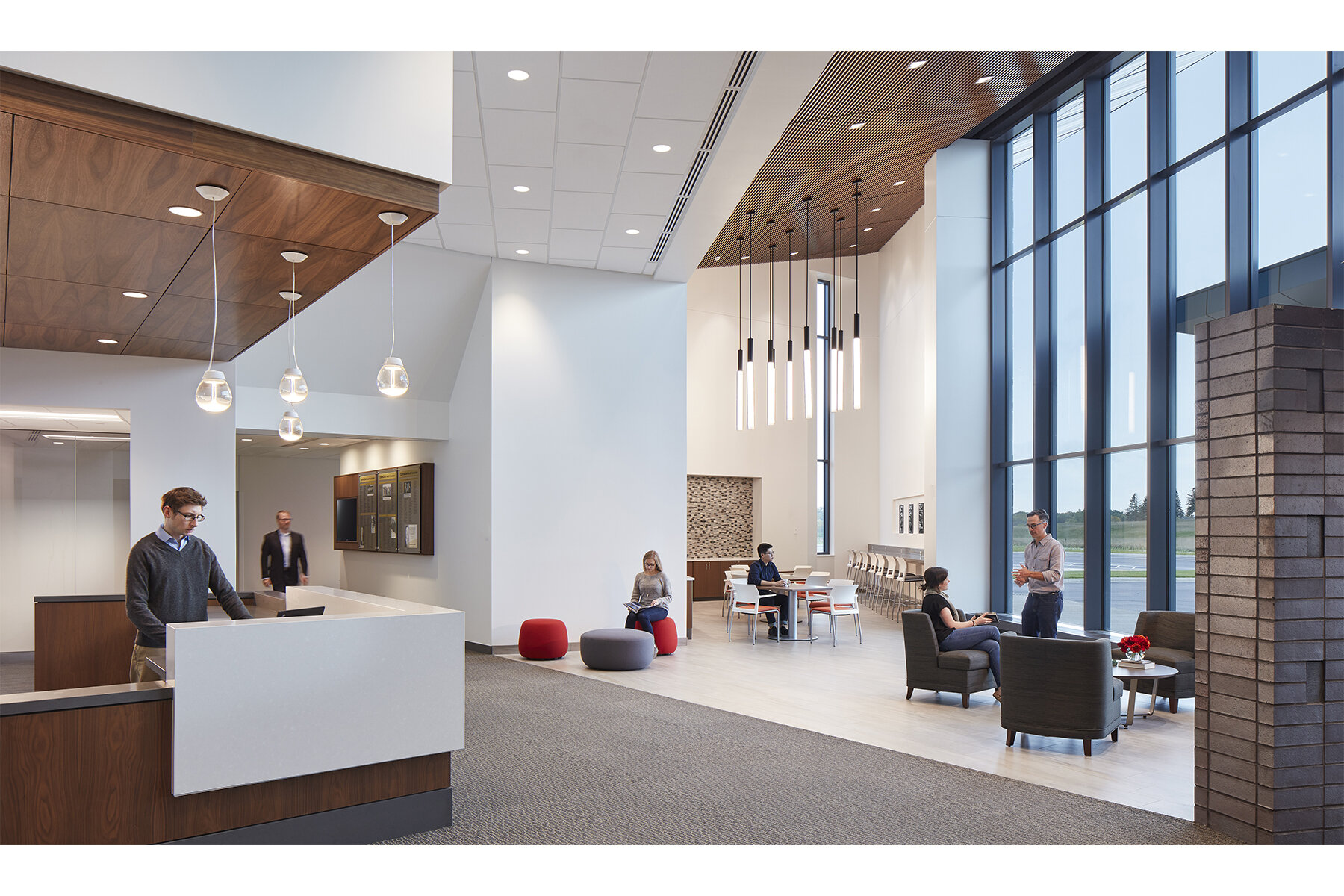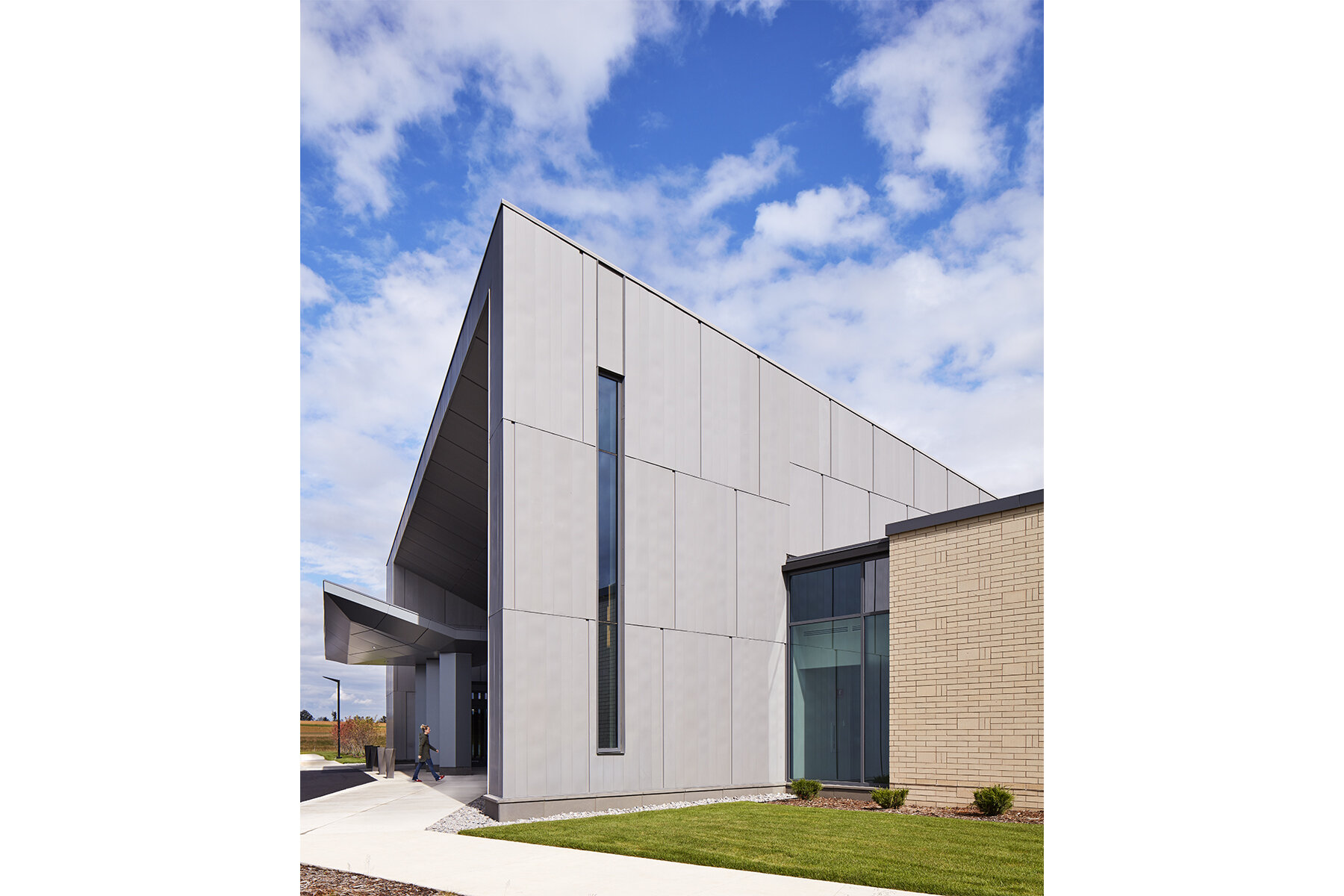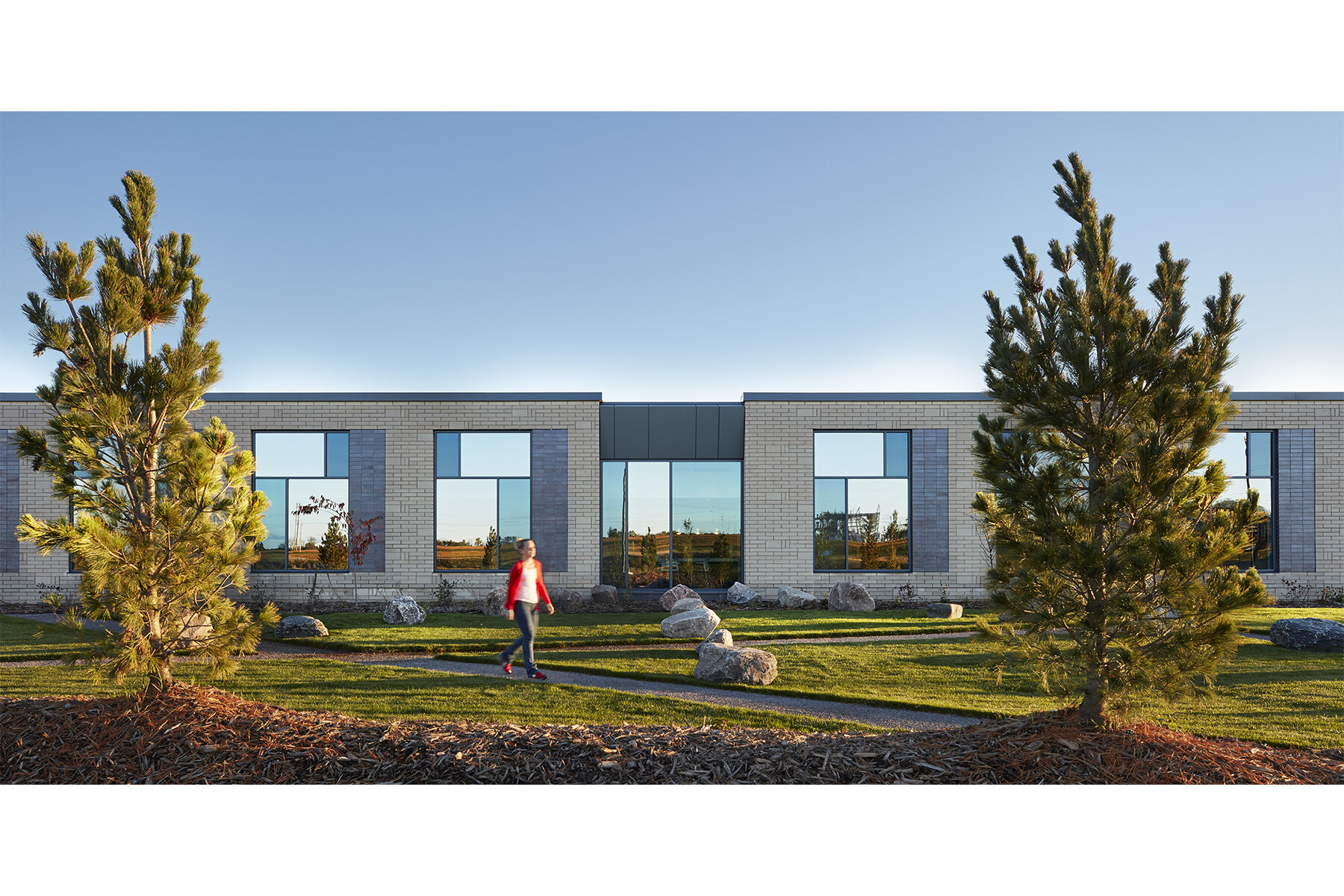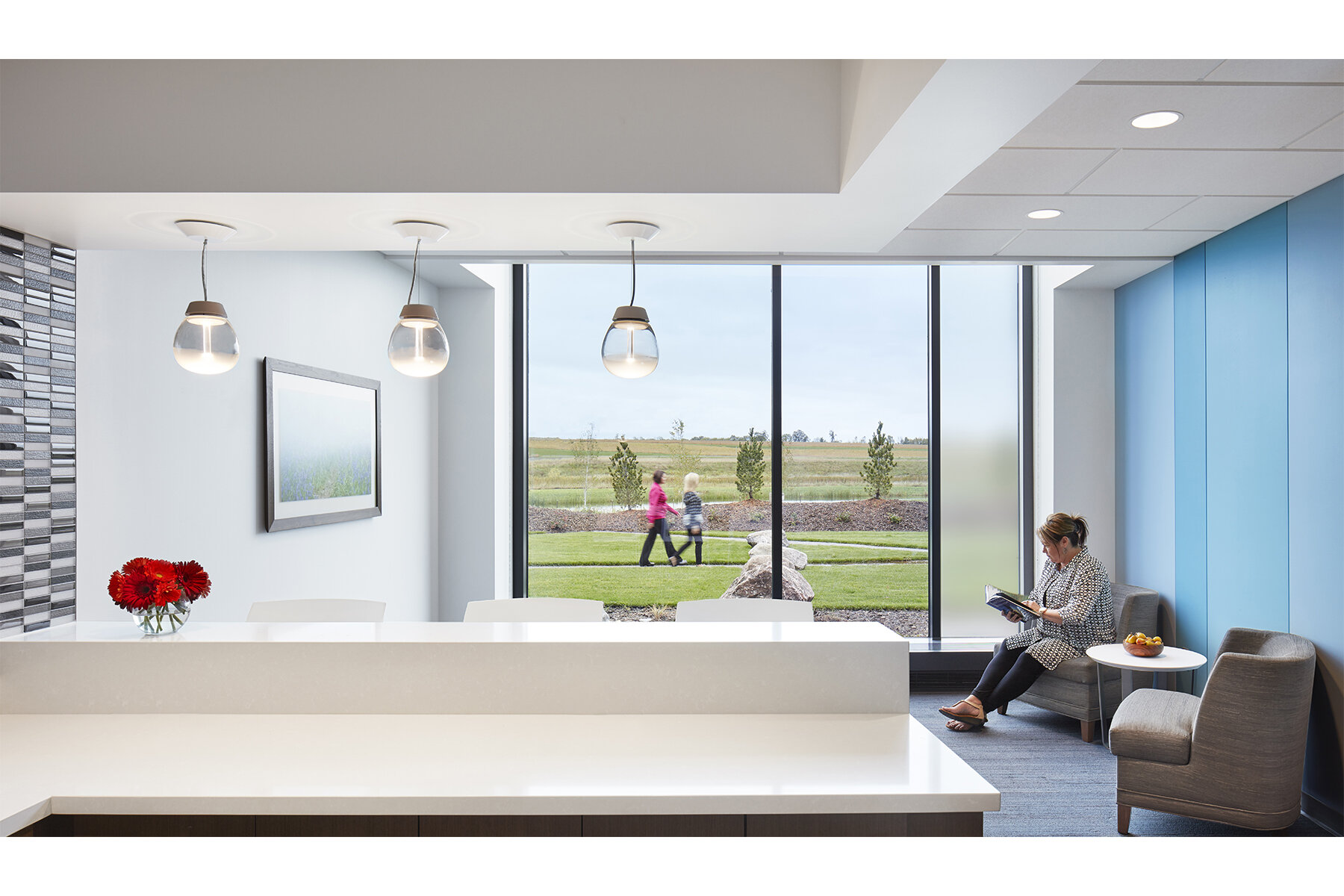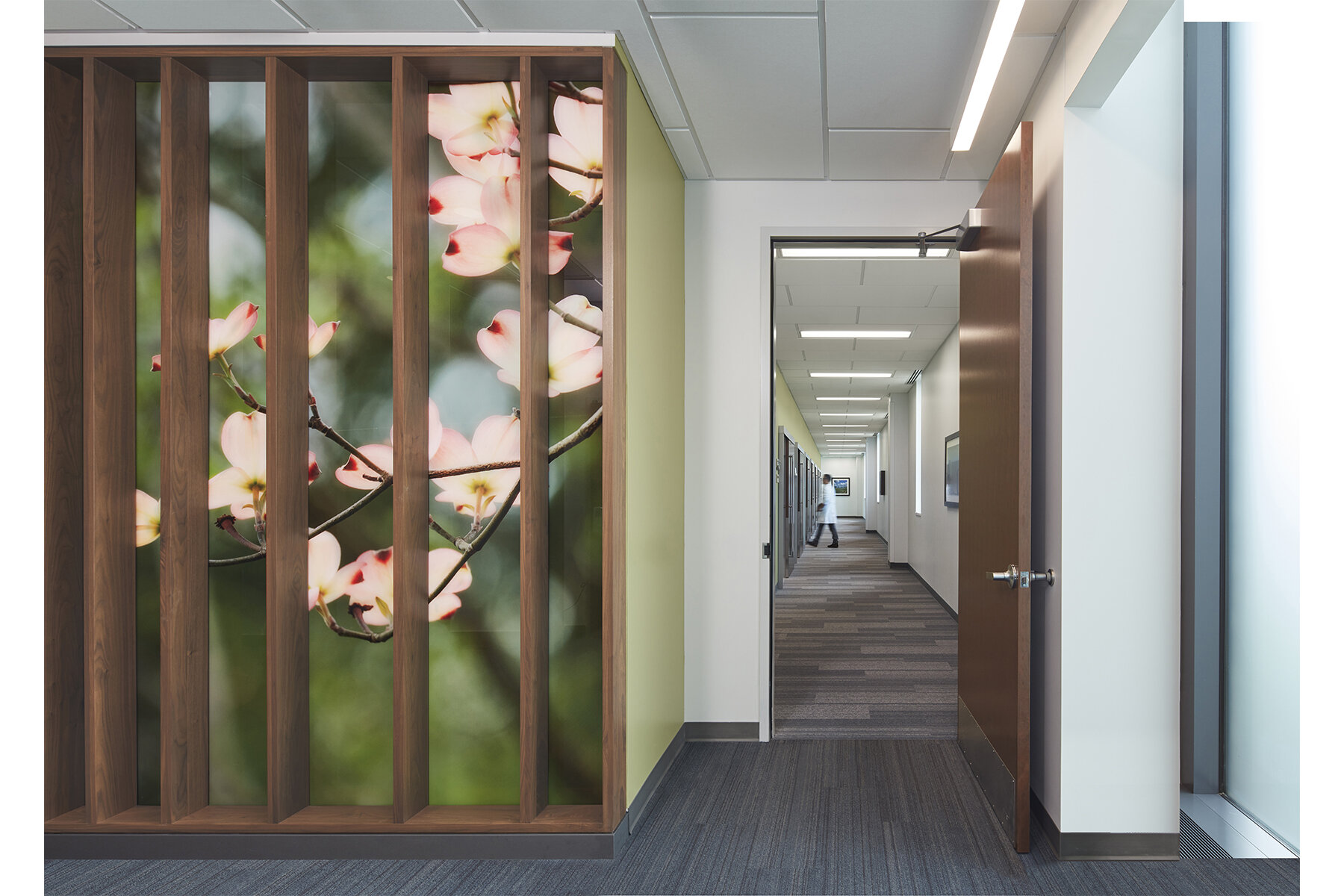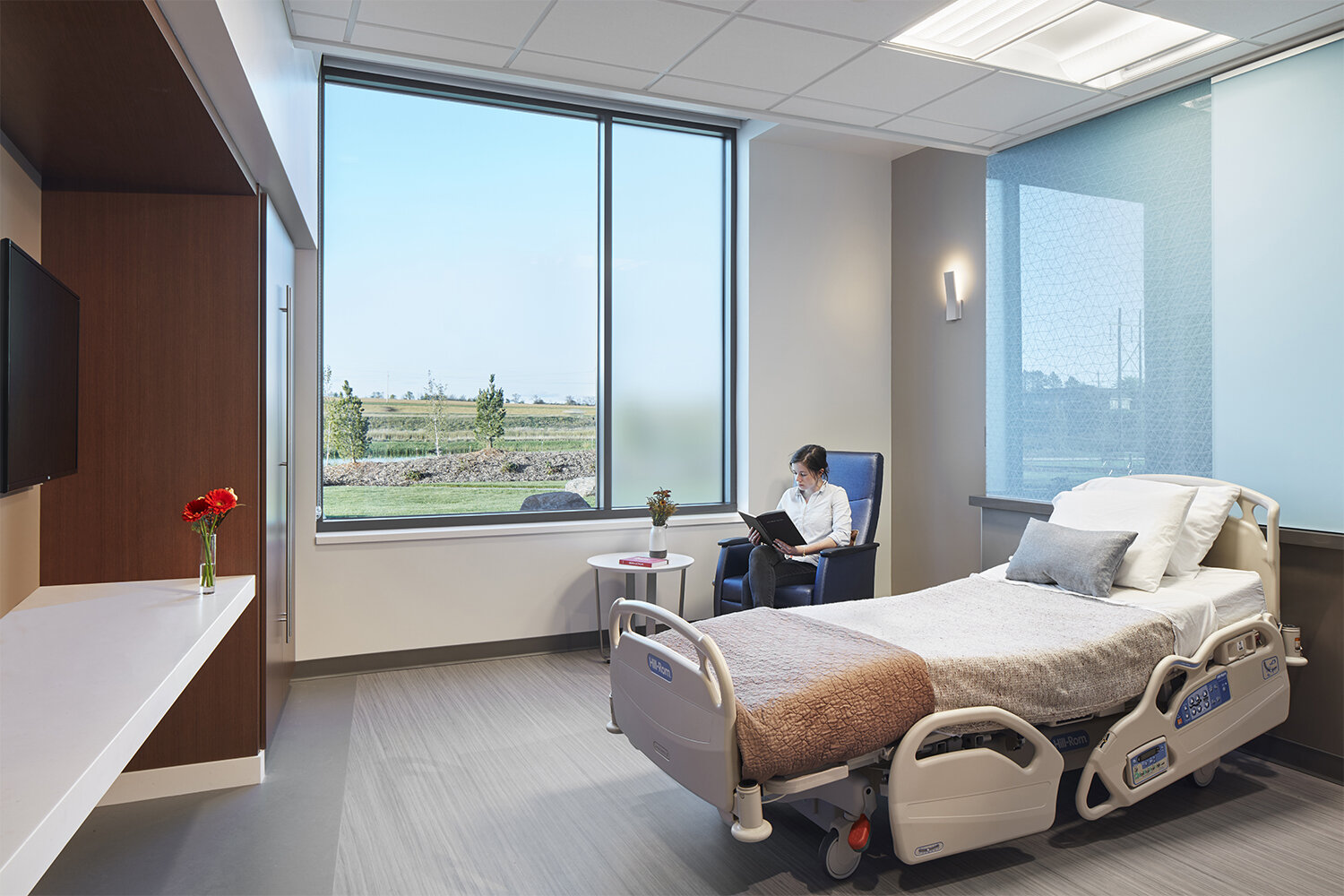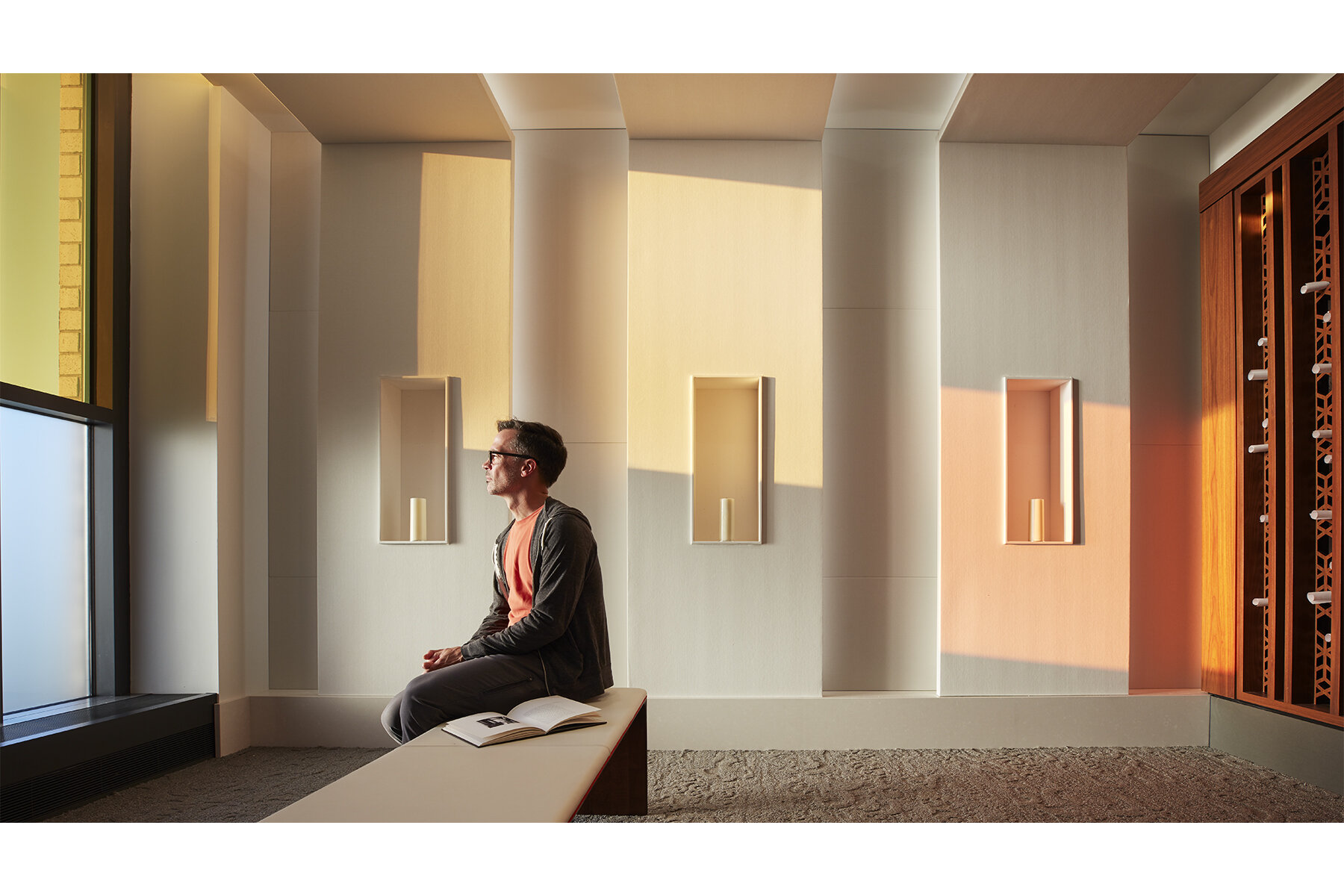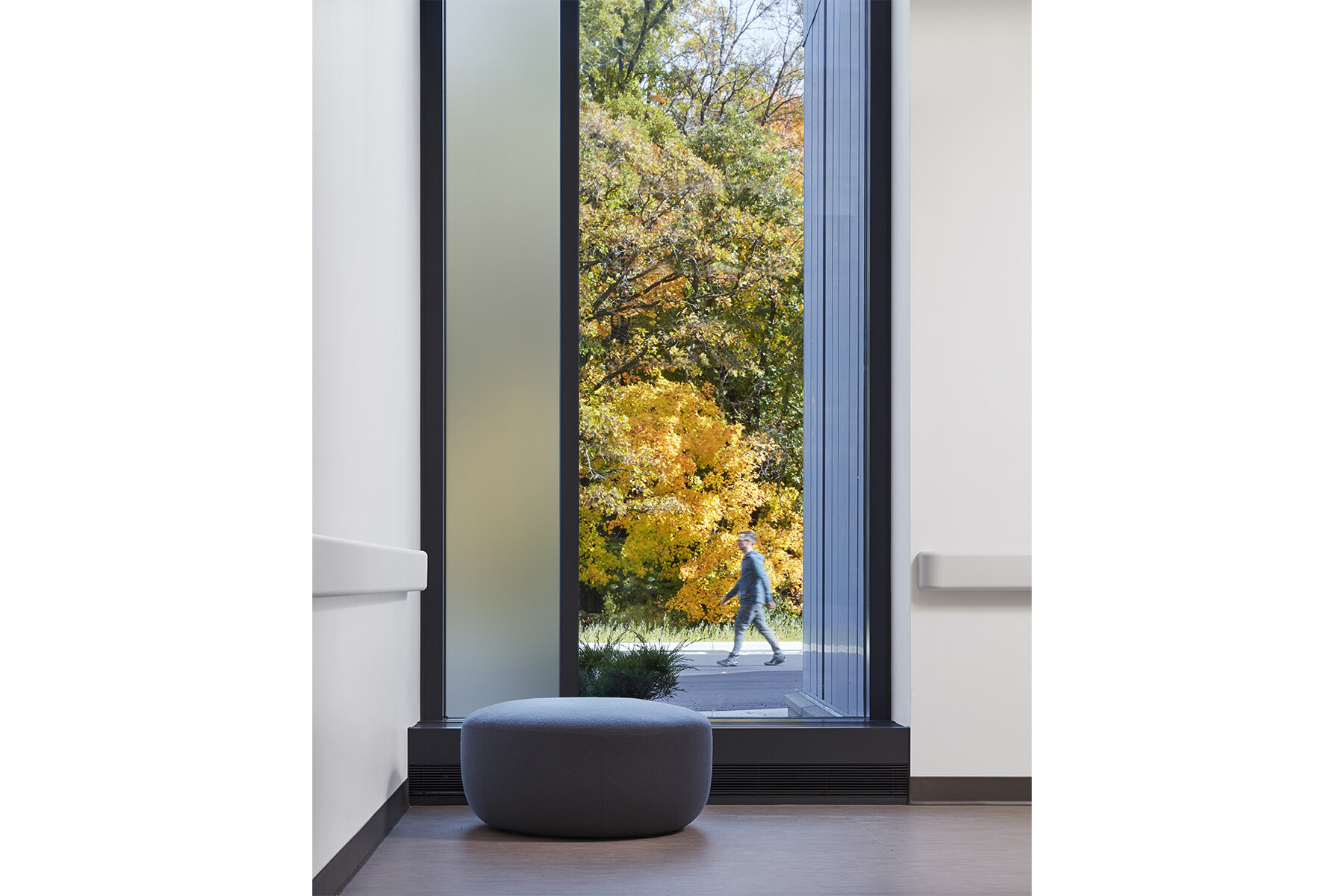The New Standard for Critical Access Hospitals in Minnesota
CentraCare Health–Long Prairie provides a small town with a hub for community health and gathering
By Joel Hoekstra | December 26, 2019
The hospital’s angular, zinc-clad entry. All photos by Gaffer Photography.
SPOTLIGHT
Finding good healthcare in rural America can be a challenge. U.S. residents who inhabit small towns or live on farms, ranches, or reservations often have few choices when it comes to choosing a physician or accessing a healthcare facility. What’s more, the nearest hospital or clinic in rural areas may be outdated, erected decades ago. In many communities, healthcare providers have weighed the high cost of updating or replacing their aging facilities and decided to pull the plug altogether.
Long Prairie is an exception. Two years ago, the city of roughly 3,500 in central Minnesota celebrated the opening of a new 65,000-square-foot hospital. The $30.8 million project, built on a greenfield site just east of town, replaced a care facility that had served the town and surrounding community since the 1950s. The Long Prairie Hospital, part of the St. Cloud–based CentraCare Health system, decided to replace rather than renovate the existing hospital, partnering with community donors to finance the construction.
“The campaign to fund the project brought in more donations than any of us expected,” says David Larson, CentraCare’s vice president for facilities management. “It really surprised us.” More than 500 donors pledged a total of more than $2.5 million to support the building of the medical facility.
CentraCare turned to Minneapolis-based HGA for the design. The building needed to be efficiently designed to keep costs down and also adaptable to fit both current and future methods of healthcare delivery, says HGA associate vice president Donovan Nelson, AIA, who oversaw the project. It needed to provide the kind of privacy that small-town clinics rarely offer, he says, and also celebrate Long Prairie’s farming landscape and culture. “CentraCare was very clear that they wanted this building to be a reflection of the community,” says Nelson.
HGA developed a design with two sides—one for the hospital and one for the clinic—separated by an administrative, diagnostic, and surgery core. Visitors arriving via the glassy, zinc-clad main entry step into a high-ceilinged reception hall, stop at the concierge-style reception desk, and are directed by staff to either the hospital or the clinic. But not all visitors are patients: Long Prairie residents regularly make use of two conference rooms off the main lobby for community activities and educational workshops, and a café just inside the entry has become a favorite stop for locals in need of coffee or a sandwich.
The building needed to be efficiently designed to keep costs down and also adaptable to fit both current and future methods of healthcare delivery.
Construction of a medical facility can be expensive, so HGA sought to keep costs down with efficient organization. Rather than stamp out a standard 25-bed hospital that meets the standard definition of a Critical Access Hospital—a designation designed to reduce the financial vulnerability of rural hospitals and keep essential healthcare services in rural areas—Donovan and his colleagues crunched the data on in-patient stays at Long Prairie and proposed limiting the facility to 12 rooms, plus two additional rooms for new moms. “We discovered there were roughly three days per year when the facility actually needed more capacity, and that we could probably come up with a plan for handling those days,” says Larson.
HGA also built in several “universal rooms” that could be used by different departments at different times. During the day, a handful of rooms are designated for post-procedure recovery, but on nights and weekends those spaces flex to handle activity from the emergency department. Exam rooms in the clinic are similarly nonspecific, in that they are not designated for a specific physician, as is traditional in much of healthcare. The design ensures that exam rooms are rarely empty as doctors and specialists rotate through their appointments.
Privacy was also valued in the design, says Donovan. Friends and family visiting the hospital for extended periods can sit in a private lounge that overlooks a meditation garden, out of public view. And patients visiting the clinic are ushered down hallways that are separated from staff areas, resulting in more privacy for clinic users and less disruption for clinic workers. A chapel with a wood-lattice partition, tinted-glass windows, and extra sound absorption provides a place for private reflection.
Large windows at the end of the main hallways frame the local landscape, and glass walls within the facility are lined with soothing graphics—natural images of regional plants and landscape features. The design encourages employees and visitors alike to see the hospital as integrated into the fabric of the Long Prairie community.
Local residents have embraced the building. The local high school volunteered its marching band to play at the groundbreaking event, and more than 900 people attended a ribbon-cutting for the grand opening. “Hospitals are important to rural communities,” says Larson. “Once a community loses its hospital or schools, what do you have left? Healthcare is something most small towns want to hold onto. It’s part of their community and their future.”


